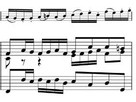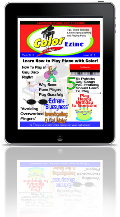When I was an up and coming piano student at the age of nine, my primary method of getting a pleasing sound out that big box learning how to read music at the piano. Like all traditional piano instruction, if it’s not on the page, you don’t play it. It was even suggested to me that once I became a better reader, that I too could play those big sounding arrangements with lots of notes.
The unfortunate thing was that I never made it to that level of sight reading. I went from one little method piece to the next. It was so slow, tedious and boring. I remember thinking to myself that it would take me ten years to learn to play something that actually sounded like real music. I blame that on the radio and how I used to listen to music for hours in my bedroom on the stereo/record player I got for Christmas when I was a kid.
But if I only would have known. You see, I would experiment at the keyboard at times but two things kept me from actually getting anywhere learning to play the piano.
1 I didn’t have any concept of what a chord was. (that’s a lot of note readers like myself at the time)

“Complicated sheet music by most beginner standards”
2 I had no guidance from someone who was an actual musician.
Don’t get me wrong. Reading music is not an illegitimate medium to playing the piano but I had the opinion that not reading music was an illegitimate way to play the instrument. An up and coming piano snob I was developing into and the sad part was that I didn’t even know it.
Fast forward to many years later, I see the big picture that wasn’t available to me as a formal piano student. I didn’t aspire to be a classical virtuoso playing two part inventions and sonatas. I was and still am like most aspiring musicians who love to hear myself playing an old standard or a bluesy gospel piece with soul.
In actuality, written music was primarily invented during a time when there was no sound recording technology available. It was the only way to “record” a piece of music for distribution and posterity. I will say that a notated piece of music is more concrete in a sense of documenting a piece of music. But traditional music notation? We have lead sheets, chord symbols, and yes this new thing called Color Score to learn and play songs on the piano. Leave teaching how to read music at the piano to beginning students until they ask “Is there a better way to learn to play the piano?” Then show them the way to play music on the piano that is fun, creative and will last a lifetime.
Find out how to sound like a pro without having to read music at the piano but instead learning the magic of using chords with a tool called Color Score.
Greg Lee
Latest posts by Greg Lee (see all)
- What is a minor/Major 7 Chord? - October 26, 2023
- 7 Chord Substitutions that Professionals Use - October 19, 2023
- 5 Simple Chord Tricks to Sound Amazing - October 5, 2023




